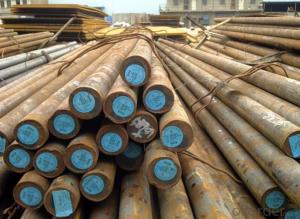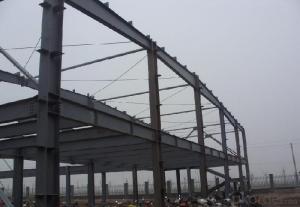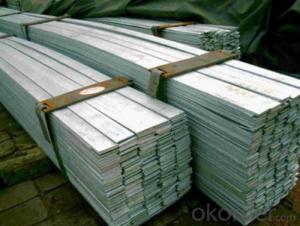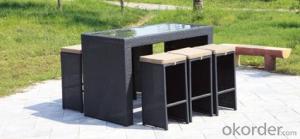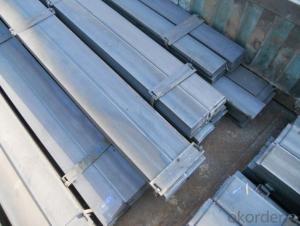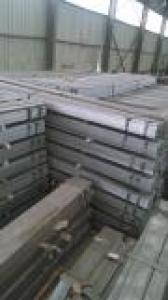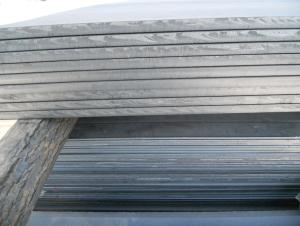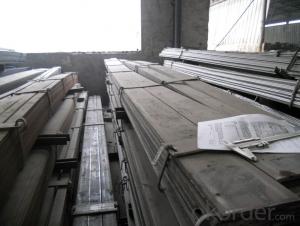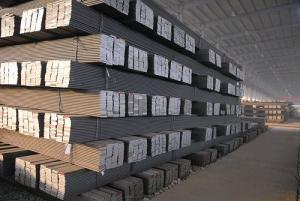Aluminum Flat Bar Stock
Aluminum Flat Bar Stock Related Searches
Led Light Bulbs For Ceiling Fixtures Led Lamps For Ceiling 42 In Ceiling Fan With Light Aluminum Coil Stock For Gutters Aluminum Foil For The Grill Hole Saw For Aluminum Plate Aluminum Tread Plate For Trailer Bow Plate For Aluminum Boat Aluminum Foil For Grow Room Aluminum Foil For Joint PainHot Searches
Stock Price For Aluminum Aluminum Coil Stock For Sale Aluminum Gutter Coil For Sale Used Aluminum Scaffolding For Sale 1/4 Aluminum Plate For Sale Aluminum Bar Stock For Sale Aluminum Round Stock For Sale Aluminum Diamond Plate For Sale Aluminum Scaffolding For Sale Craigslist 6061 Aluminum Plate For Sale Aluminum Dock Plate For Sale 7075 Aluminum Plate For Sale Aluminum Tread Plate For Sale Aluminum Checker Plate For Sale Aluminum Plate For Sale Near Me Plate Aluminum For Sale Aluminum Plate For Sale Aluminum Square Stock For Sale Aluminum Flat Stock For Sale Billet Aluminum Stock For SaleAluminum Flat Bar Stock Supplier & Manufacturer from China
Okorder.com is a professional Aluminum Flat Bar Stock supplier & manufacturer, offers integrated one-stop services including real-time quoting and online cargo tracking. We are funded by CNBM Group, a Fortune 500 enterprise and the largest Aluminum Flat Bar Stock firm in China.Hot Products
FAQ
- The typical tolerances for steel flat bars can vary depending on the specific industry and application. However, in general, the standard tolerances for steel flat bars are typically +/- 1/8 inch. This means that the actual dimensions of the steel flat bars can deviate by up to 1/8 inch from the specified dimensions. It is important to note that these tolerances can also be affected by factors such as the manufacturing process, the grade of steel used, and any additional specifications or requirements set by the customer or industry standards. In some cases, tighter tolerances may be required for precision applications or industries that demand high accuracy and consistency. In such cases, the tolerances for steel flat bars can be specified more precisely, such as +/- 0.005 inches or even tighter. Ultimately, the specific tolerances for steel flat bars will depend on the requirements of the project, industry standards, and the capabilities of the manufacturer. It is always recommended to consult the relevant standards or work with a trusted supplier to ensure that the tolerances meet the desired specifications for a particular application.
- Steel flat bars are typically stored and transported in a manner that guarantees their safety and prevents any harm. One popular storage technique involves horizontally stacking the bars on a flat surface, such as a pallet or a rack, allowing for easy access and preventing bending or warping. To provide further protection during storage, the bars are often covered with a protective material like plastic or cardboard to shield them from moisture or dust that could impact their quality. Regarding transportation, steel flat bars are usually loaded onto trucks or shipping containers, where they are securely strapped or banded together to prevent movement or shifting during transit. This ensures the bars remain undamaged and prevents any accidents during transportation. For long-distance transportation, wooden crates or metal frames may be used to offer additional protection. It is important to note that the weight and size of steel flat bars can vary, necessitating the use of appropriate equipment and methods for handling and transportation. Forklifts or cranes are commonly employed to load and unload the bars from trucks or shipping containers. It is crucial to adhere to proper safety procedures and guidelines to avoid any injuries or damage to the bars during these processes. Overall, the storage and transportation of steel flat bars prioritize their safety and maintain their quality. By employing suitable storage methods and proper handling during transportation, the bars can reach their destination without any damage or compromise to their structural integrity.
- Some of the different surface coatings available for steel flat bars include galvanized coating, powder coating, epoxy coating, and paint coating. These coatings provide protection against corrosion, enhance durability, and improve the aesthetic appearance of the steel flat bars.
- The overall stability of a structure is significantly improved with the use of steel flat bars. These bars possess exceptional tensile strength, allowing them to withstand immense forces without bending or breaking. As a result, they provide crucial structural support, preventing the structure from collapsing under heavy loads or external pressures. Furthermore, steel flat bars are commonly employed as braces or reinforcements in construction. They can be strategically positioned and welded to different sections of the structure to enhance its rigidity and prevent any potential deformations. Through the even distribution of weight, these bars play a key role in maintaining the structural integrity and preventing undesirable movements or vibrations. Additionally, steel flat bars exhibit remarkable durability and resistance to corrosion, making them ideal for long-term use in various environments. This durability ensures that the structure remains stable and secure over time, even when exposed to harsh conditions, moisture, or chemicals. Moreover, the versatility of steel flat bars allows for their application in a wide range of structural scenarios. Whether they are used for beams, columns, trusses, or as a foundation for other components, these bars provide stability and support to different parts of the structure. They can be easily customized and fabricated to meet specific design requirements, guaranteeing that the structure is constructed to withstand the intended loads and forces. In conclusion, steel flat bars are essential elements in enhancing the overall stability of a structure. Their exceptional tensile strength, resistance to deformation, durability, and versatility make them indispensable components in construction projects. By offering support, reinforcement, and resistance against external forces, these bars contribute significantly to the structural integrity and safety of the built environment as a whole.
- Yes, steel flat bars are available in various widths and thicknesses to cater to different needs and applications.
- Determining the maximum load capacity of a steel flat bar involves considering several factors. Firstly, the load capacity depends on the material properties of the steel, including its yield strength and tensile strength. These properties can typically be found in engineering handbooks or the manufacturer's specifications. The yield strength represents the maximum stress the steel can withstand before permanent deformation, while the tensile strength indicates the maximum stress it can handle before breaking. Secondly, the dimensions of the flat bar are crucial. The width, thickness, and length of the bar all contribute to its load-carrying capacity. Generally, a wider and thicker bar has a higher load capacity than a narrower and thinner one. The length of the bar also affects its ability to bear loads, as longer bars are more prone to bending and sagging. The type of loading the flat bar will experience is another factor to consider. Different types of loads, such as evenly distributed loads or point loads, have varying effects on the bar's capacity. Additionally, the support conditions at the ends of the bar play a role. Whether the ends are simply supported or fixed will impact the bar's load-bearing ability. Engineers often utilize mathematical equations, such as the Euler-Bernoulli beam theory or the yield strength formula, to determine the maximum load capacity. These equations incorporate the material properties, dimensions, and loading conditions. They provide a way to calculate the maximum load the steel flat bar can withstand without failure. It is important to note that these calculations are based on theoretical assumptions and simplifications. Real-world applications may have additional factors to consider, such as safety factors, environmental conditions, and dynamic loading. Therefore, it is advisable to consult with a qualified engineer or structural analyst to ensure an accurate determination of the maximum load capacity for a specific steel flat bar application.
- Yes, steel flat bars can be used in the marine industry. Steel is a commonly used material in maritime applications due to its high strength, durability, and resistance to corrosion. Steel flat bars can be utilized for various purposes such as structural frameworks, support beams, and reinforcement in marine vessels, offshore platforms, and other marine structures. Additionally, steel can be coated or treated to further enhance its resistance to saltwater corrosion, making it suitable for marine environments.
- There are several different methods of surface coloring for steel flat bars, each with its own unique advantages and applications. Some of the most commonly used methods include: 1. Hot-dip galvanizing: This process involves immersing the steel flat bar into a bath of molten zinc, which creates a protective layer on the surface. Galvanizing provides excellent corrosion resistance and is often used in outdoor or high-moisture environments. 2. Powder coating: Powder coating involves applying a dry powder paint to the surface of the steel flat bar, which is then cured using heat. This method offers a wide range of color options, excellent durability, and resistance to chipping, scratching, and fading. 3. Electroplating: Electroplating is a process where a thin layer of metal, such as chrome or nickel, is deposited onto the steel flat bar's surface using an electric current. This method can enhance the appearance of the steel while also providing corrosion resistance. 4. Paint coating: The traditional method of applying paint directly to the surface of the steel flat bar is still widely used. It allows for a wide variety of colors and finishes, but the durability and corrosion resistance may not be as high as other methods. 5. Chemical coloring: This method involves using chemicals to create a controlled oxidation process on the steel flat bar's surface, resulting in various colors and shades. Chemical coloring can provide an attractive appearance while also increasing corrosion resistance. 6. Anodizing: Anodizing is primarily used for aluminum, but it can also be applied to steel flat bars. It involves creating an oxide layer on the surface through an electrochemical process, resulting in enhanced corrosion resistance and the ability to add color through dyes. Each of these methods has its own set of advantages and considerations, such as cost, environmental impact, durability, and aesthetic appeal. The choice of surface coloring method will depend on the specific requirements of the application, including the desired appearance, level of corrosion resistance, and budget constraints.



















